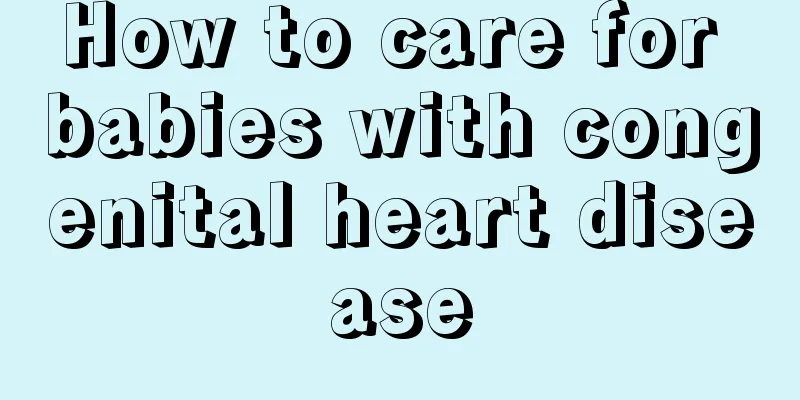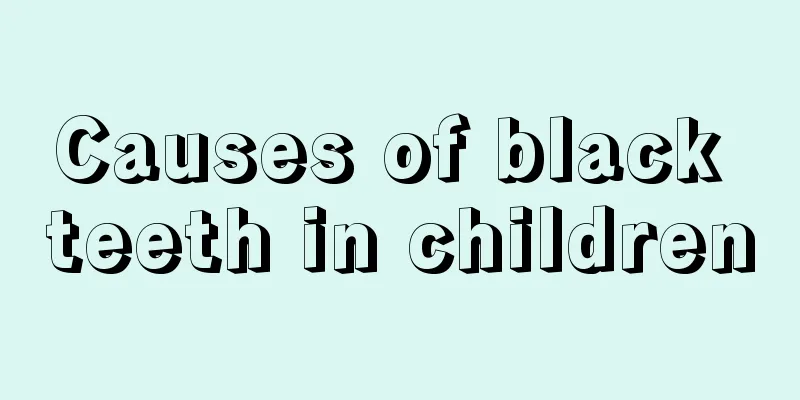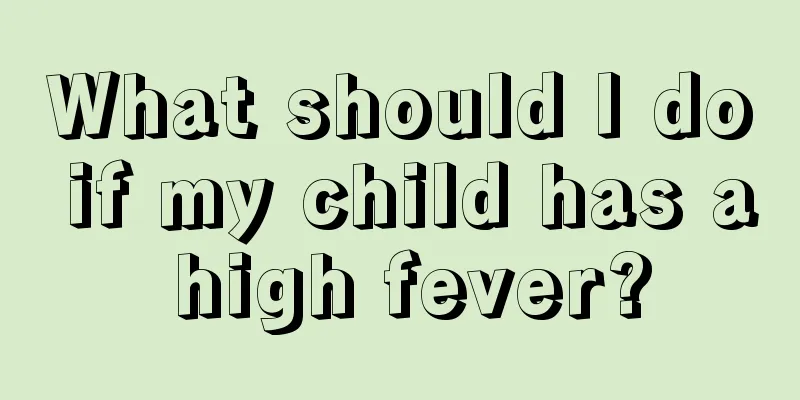How to care for babies with congenital heart disease

|
If a baby has congenital heart disease, the baby's family will be very worried, fearing that the baby's condition will be worsened by carelessness. Therefore, it is necessary for the baby's family to understand the relevant knowledge about how to care for congenital heart disease. So how to care for a baby with congenital heart disease? Next, please see the detailed introduction. Congenital heart disease in babies is a malformation caused by abnormal development of the heart and blood vessels during the fetal period, with an incidence rate of about 0.7%. Due to the severity of the disease and the complexity of the malformation, the baby will die one month after birth. One-third of the babies will develop complications such as pulmonary hypertension and lose the opportunity for surgery or interventional treatment. The cause of congenital heart disease in children is still unclear. It may be related to internal factors, chromosomal abnormalities and external factors. The mother is disturbed by the outside world in the early pregnancy, such as viral infection, chemical factors, and radiation effects. How to care for babies with congenital heart disease? The following issues should be noted during nursing care: 1. Try to avoid the baby from crying and meet his physiological needs, such as feeding on time and changing diapers in time. For breastfed babies, do not block the baby's mouth and nose with the breast for continuous sucking, as this will cause the baby to suffocate and easily cause cyanosis. Breastfeed intermittently to allow the baby to rest. The same is true for artificial feeding. 2. The indoor air should be fresh and the temperature should be appropriate. Children with persistent cyanosis should avoid high indoor temperature and humidity, and should always ensure adequate drinking water to avoid dehydration and thrombosis. 3. The diet should be nutritious and easy to digest and absorb. Don't eat too much at one meal, eat small meals frequently. Properly adjust the structure of food to prevent constipation. 4. Establish a reasonable life system, avoid excessive fatigue, but also have appropriate outdoor activities, combining movement and stillness, to try to reduce the burden on the heart. 5. Go to public places less often and pay attention to preventing various acute infectious diseases. Various vaccinations can be carried out on time as needed, but the reactions must be closely observed and effective measures must be taken in time to prevent accidents. 6. When tonsillitis recurs, there is a risk of concurrent bacterial endocarditis. Tonsils should be removed while actively taking anti-inflammatory treatment. If the child needs to have a tooth extracted, preventive anti-inflammatory treatment should be given. 7. Children should undergo surgical treatment between the ages of 4-5 and 12. The above is an introduction on how to care for babies with congenital heart disease. I believe that after reading the introduction in this article, you will understand how congenital heart disease occurs in babies and the related care methods. This will allow the family of the sick child to take better care of the baby. I hope the above introduction will be helpful to you. |
<<: There are several treatments for pseudomyopia in adolescents
>>: What to do with pseudomyopia in adolescents
Recommend
White discharge from baby girl
Most baby girls will have white secretions after ...
What should I do if my child has a fever and convulsions?
For family members, the health of their children ...
What causes shortness of breath in young children?
Nowadays, many families have only one child. Pare...
Can babies take a bath when they have acute rash?
In life, we must pay attention to the physical he...
What to do if the baby suddenly cries while sleeping at night
There are many reasons why babies suddenly cry at...
What to do if your two and a half year old baby coughs
Symptoms of coughing often appear in babies under...
What should I do if my newborn baby has loose stools?
The birth of a baby brings great happiness to a f...
Six-month developmental standard for premature infants
When a premature baby reaches six months old, its...
What is the best way to reduce fever in children?
Children will always encounter some health proble...
What foods are not suitable for children to eat?
Many very young children have great nutritional n...
How to care for children with fever and cold hands and feet
Cold hands and feet are a common symptom in child...
What should I do if my baby has a cold and is a little wheezing?
Once the weather changes a little, parents will w...
Why does my baby keep shaking his head?
There are more and more new parents now, and they...
What is the reason for babies to tie up the horse post?
The hitching post usually grows in front of or be...
What is the cause of the peeling of the child's feet?
The phenomenon of children's feet peeling is ...









